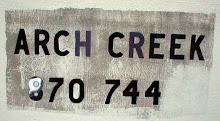Fascinating article, here.
[Irish philosopher George] Berkeley [1685-1753] had recognized some serious flaws in the direct-perception theory—in the notion that when we see, hear, or feel we are just taking in the sights, sounds, and textures of the world. For one thing, it cannot explain how we experience things that seem physically real but aren’t: sensations of itching that arise from nothing more than itchy thoughts; dreams that can seem indistinguishable from reality; phantom sensations that amputees have in their missing limbs. And, the more we examine the actual nerve transmissions we receive from the world outside, the more inadequate they seem.
Our assumption had been that the sensory data we receive from our eyes, ears, nose, fingers, and so on contain all the information that we need for perception, and that perception must work something like a radio. It’s hard to conceive that a Boston Symphony Orchestra concert is in a radio wave. But it is. So you might think that it’s the same with the signals we receive—that if you hooked up someone’s nerves to a monitor you could watch what the person is experiencing as if it were a television show.
Yet, as scientists set about analyzing the signals, they found them to be radically impoverished. Suppose someone is viewing a tree in a clearing. Given simply the transmissions along the optic nerve from the light entering the eye, one would not be able to reconstruct the three-dimensionality, or the distance, or the detail of the bark—attributes that we perceive instantly. . . .
The images in our mind are extraordinarily rich. We can tell if something is liquid or solid, heavy or light, dead or alive. But the information we work from is poor—a distorted, two-dimensional transmission with entire spots missing. So the mind fills in most of the picture. You can get a sense of this from brain-anatomy studies. If visual sensations were primarily received rather than constructed by the brain, you’d expect that most of the fibres going to the brain’s primary visual cortex would come from the retina. Instead, scientists have found that only twenty per cent do; eighty per cent come downward from regions of the brain governing functions like memory. Richard Gregory, a prominent British neuropsychologist, estimates that visual perception is more than ninety per cent memory and less than ten per cent sensory nerve signals. When Oaklander theorized that M.’s itch was endogenous, rather than generated by peripheral nerve signals, she was onto something important.
The fallacy of reducing perception to reception is especially clear when it comes to phantom limbs. Doctors have often explained such sensations as a matter of inflamed or frayed nerve endings in the stump sending aberrant signals to the brain. But this explanation should long ago have been suspect. Efforts by surgeons to cut back on the nerve typically produce the same results that M. [the itcher] had when they cut the sensory nerve to her forehead: a brief period of relief followed by a return of the sensation. . . .
The account of perception that’s starting to emerge is what we might call the “brain’s best guess” theory of perception: perception is the brain’s best guess about what is happening in the outside world. The mind integrates scattered, weak, rudimentary signals from a variety of sensory channels, information from past experiences, and hard-wired processes, and produces a sensory experience full of brain-provided color, sound, texture, and meaning. . . .
The theory—and a theory is all it is right now—has begun to make sense of some bewildering phenomena. Among them is an experiment that Ramachandran performed with volunteers who had phantom pain in an amputated arm. They put their surviving arm through a hole in the side of a box with a mirror inside, so that, peering through the open top, they would see their arm and its mirror image, as if they had two arms. Ramachandran then asked them to move both th
eir intact arm and, in their mind, their phantom arm—to pretend that they were conducting an orchestra, say. The patients had the sense that they had two arms again. Even though they knew it was an illusion, it provided immediate relief. People who for years had been unable to unclench their phantom fist suddenly felt their hand open; phantom arms in painfully contorted positions could relax. With daily use of the mirror box over weeks, patients sensed their phantom limbs actually shrink into their stumps and, in several instances, completely vanish. Researchers at Walter Reed Army Medical Center recently published the results of a randomized trial of mirror therapy for soldiers with phantom-limb pain, showing dramatic success.
A lot about this phenomenon remains murky, but here’s what the new theory suggests is going on: when your arm is amputated, nerve transmissions are shut off, and the brain’s best guess often seems to be that the arm is still there, but paralyzed, or clenched, or beginning to cramp up. Things can stay like this for years. The mirror box, however, provides the brain with new visual input—however illusory—suggesting motion in the absent arm. The brain has to incorporate the new information into its sensory map of what’s happening. Therefore, it guesses again, and the pain goes away. . . .

1 comment:
giannis shoes
supreme hoodie
offwhite
paul george shoes
hermes bags
jordan 1 off white
golden goose outlet
kobe 9
longchamp handbags
moncler outlet
Post a Comment